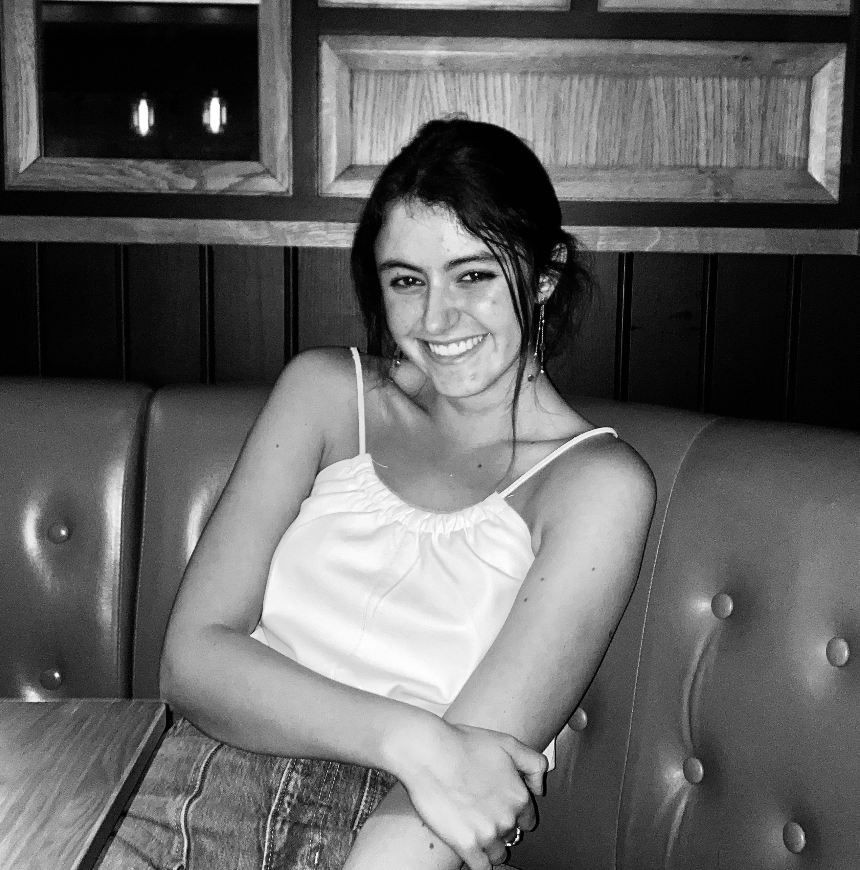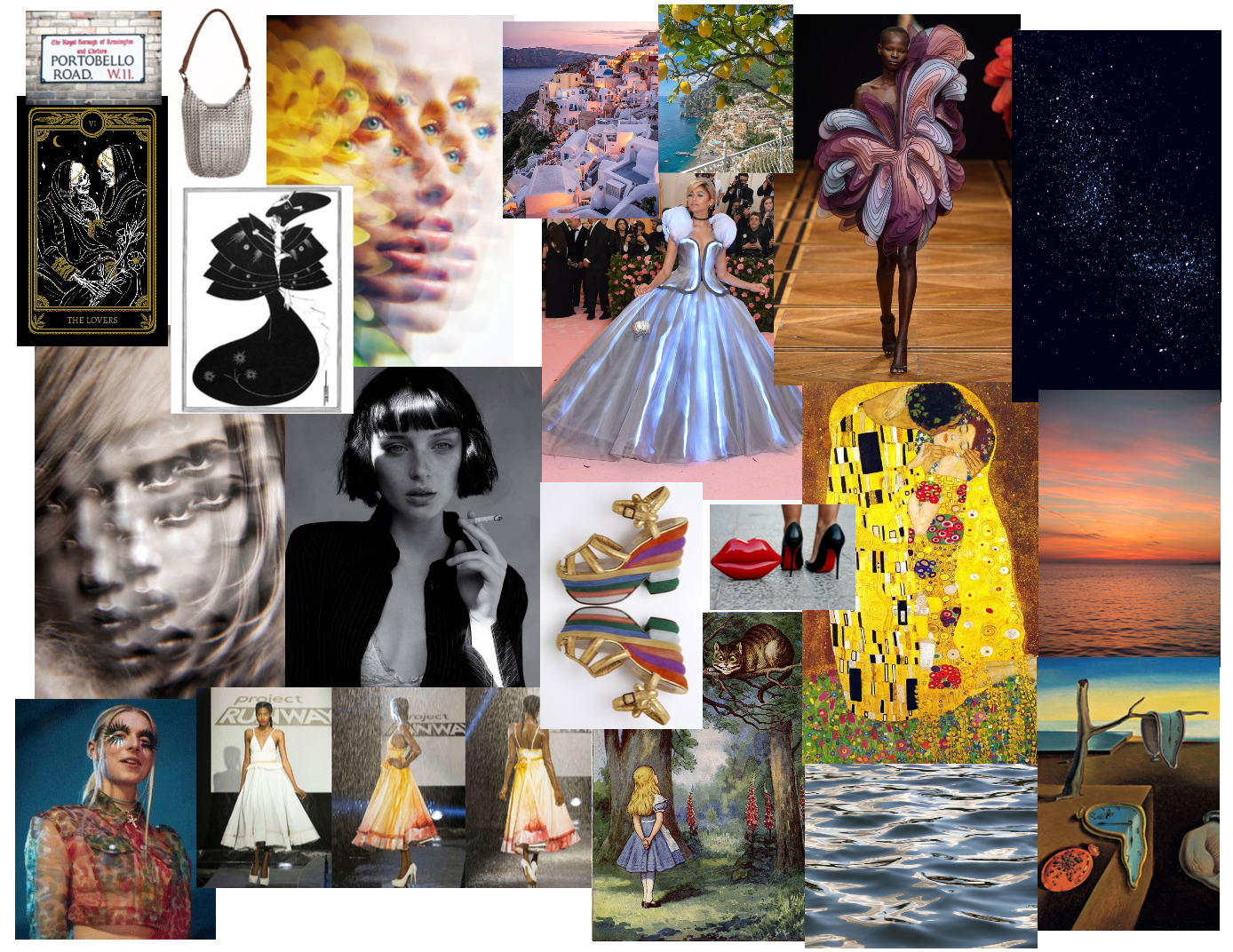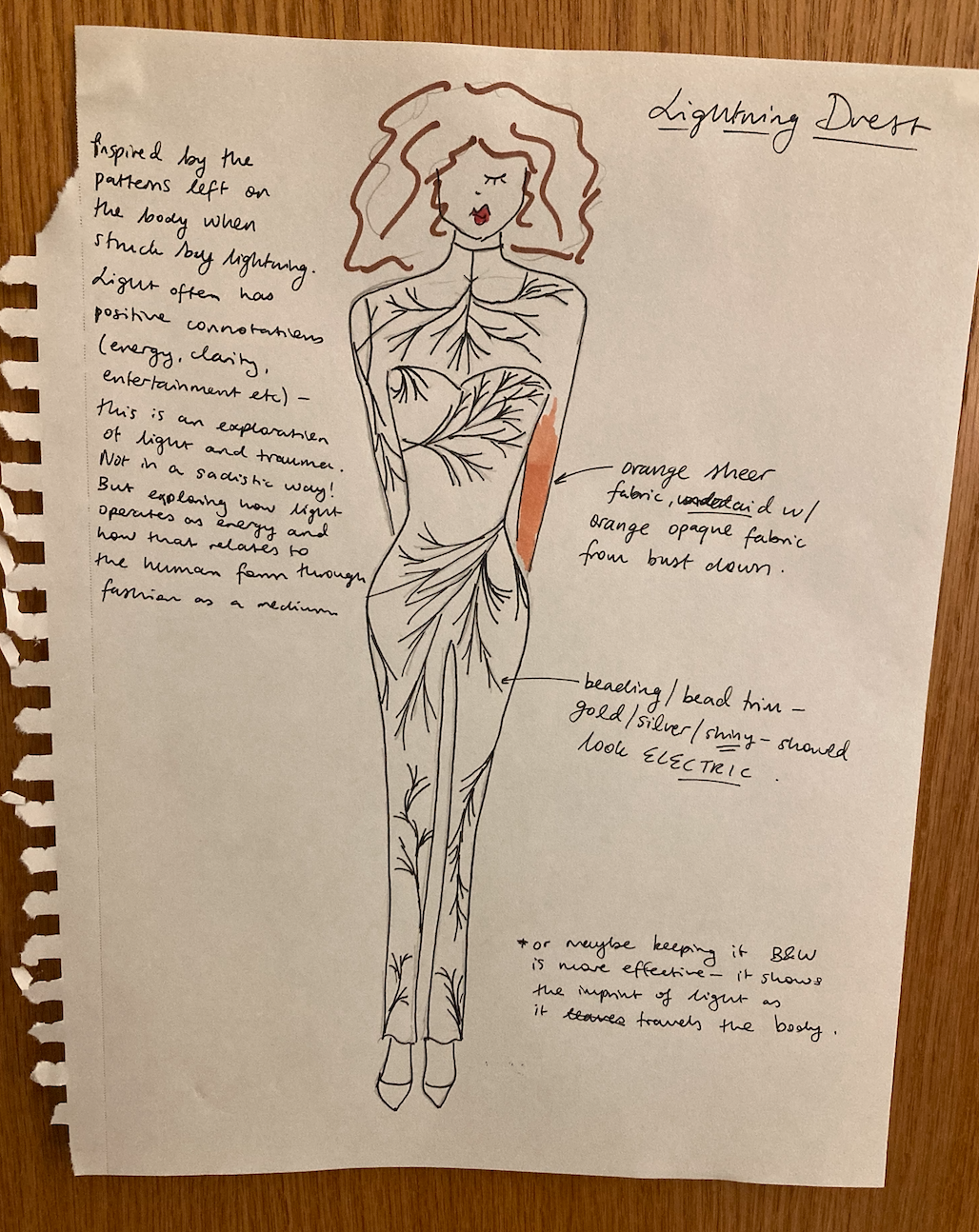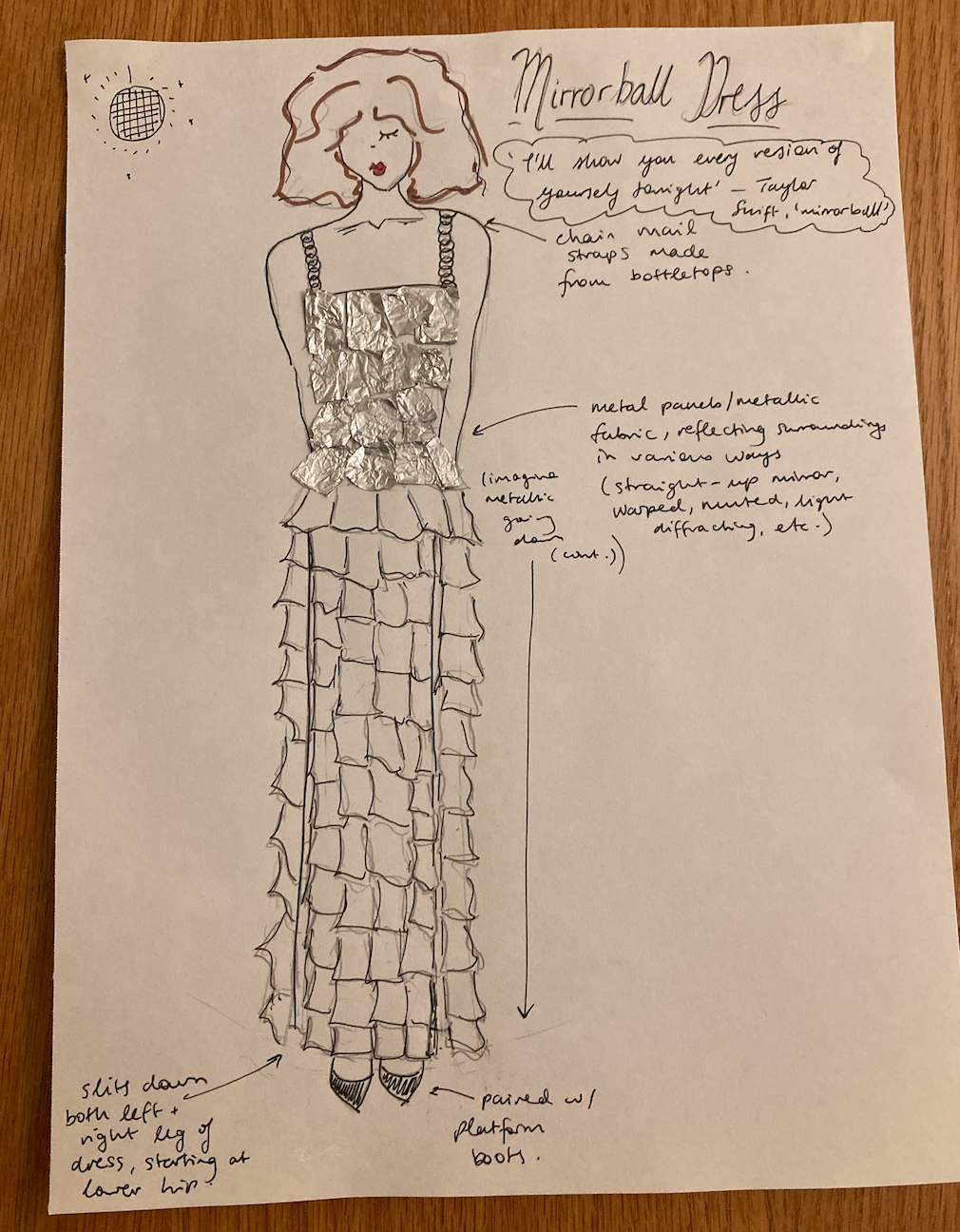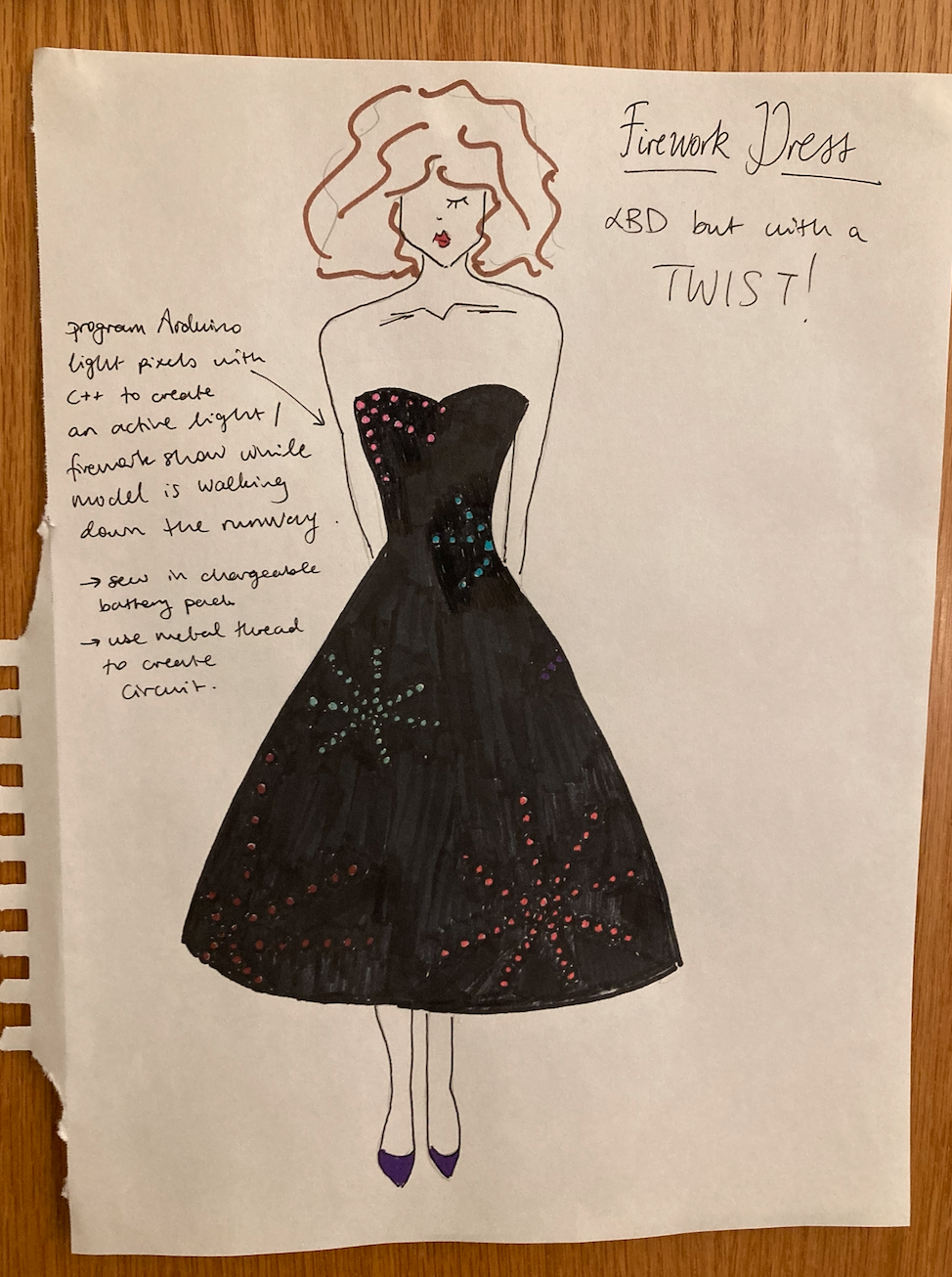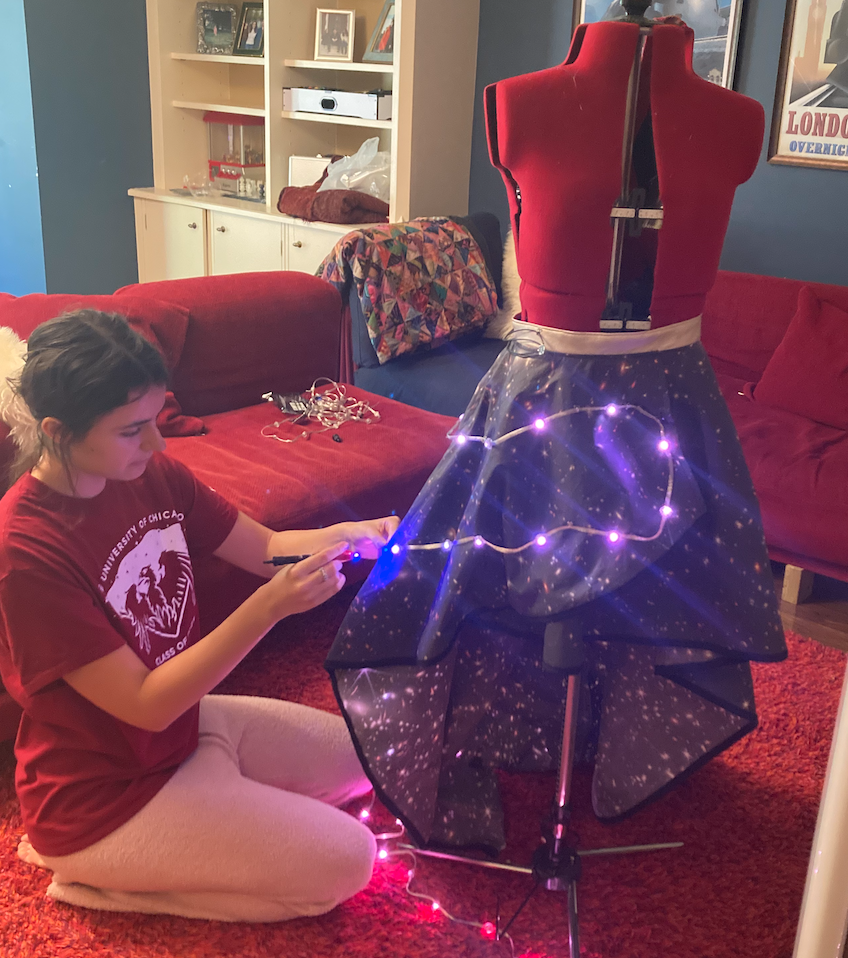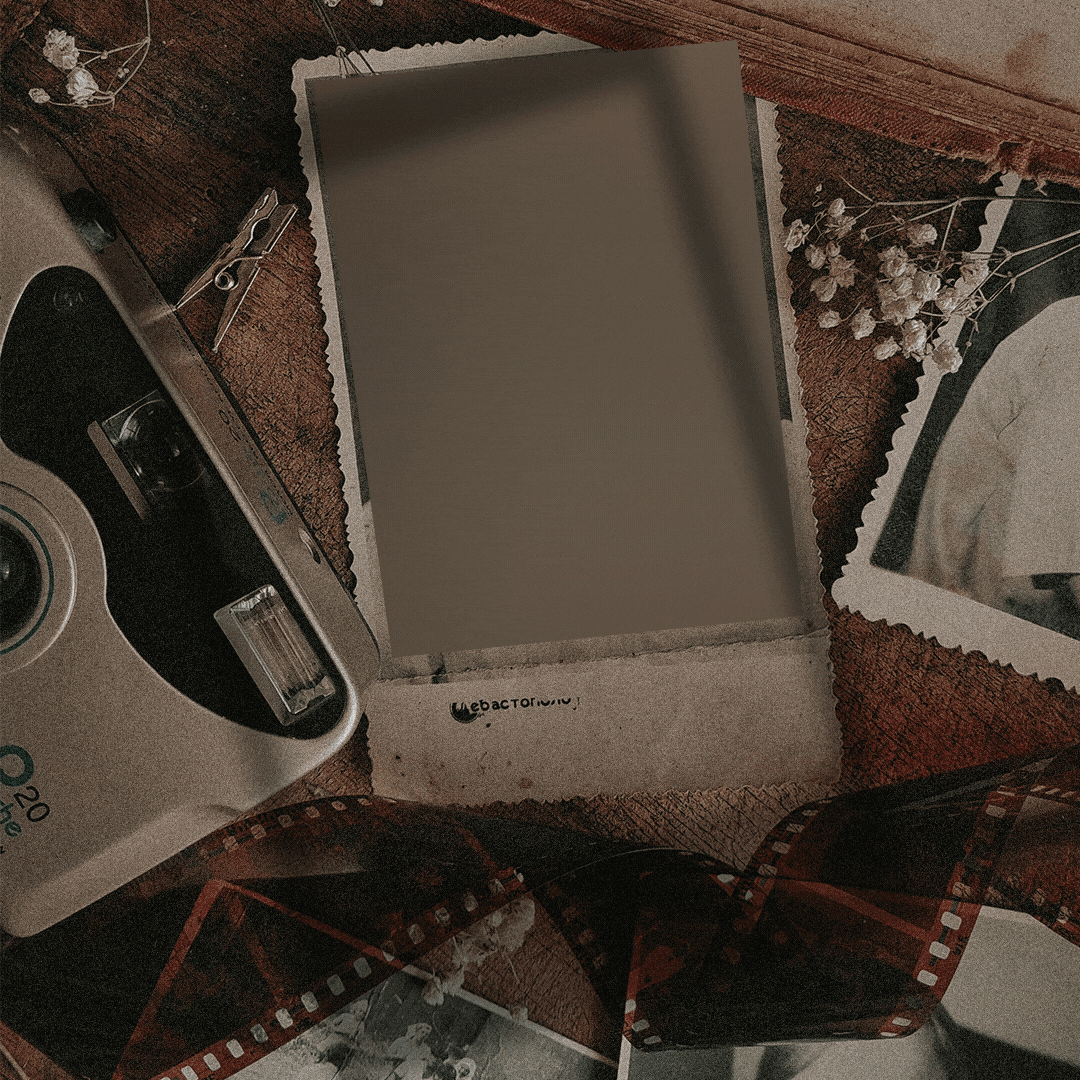Designer Profile 2023: Meghane Saidenberg
In light of the upcoming MODA student fashion show, I interviewed designer and friend Meghane Saidenberg to uncover a bit of the process and inspiration behind her work. Meghane is a second year at the college studying data science, hopefully minoring in computational neuroscience and/or statistics. She’s involved with research on campus surrounding data science. This is her first time designing for MODA.
Meghane’s moodboard.
If you were presenting your line to an audience what would you say? What are your inspirations and motivations? What does the line mean to you?
I view the pieces that I will be presenting at MODA as part of a larger collection; this is a capsule collection focusing on different permutations of light. For example, I have a dress that lights up in dark ambient environments and I’m combining my different technical skill sets in sewing and coding. I had to learn a lot about physical hardware that I’m not used to doing in order to achieve that. For that, I took inspiration from the NASA James Webb images that were released. I have another dress inspired by a mirrorball. Also, I made two pieces inspired by impressionism and how the artist’s perspective became the most important thing when creating a piece of art. But eventually it went down the train of being inspired by ink blot tests and my love for exploring street art in how to make something really cool out of a different structure. My last outfit is inspired by lighting and the event of being struck by lightning. It leaves a scar that appears to have electrified your veins and brought them to the surface. With this, I wanted to explore light as something traumatic. A different angle to light.
How did you start designing? Is this your first time creating a line of works?
This is my first time actually sitting down and creating a physical collection. But, I’ve loved fashion design since I can remember. In middle school, I used to carry around a sketchbook that had a collection of dotted outlines of women to sketch designs. I would just sit down and sketch during my break times; I got really into fashion illustrations and took a lot of time learning how to render fabrics with pen onto the paper properly. I also participated in school fashion shows for charity. Those were such surreal experiences to be able to see your work: all the audience sees is the finished product but you know the amount of work that gets put into it. But designing for MODA is the first time where multiple of my designs are walking down the runway.
How did material influence your final pieces?
I am very driven by exploring textiles and trying to create textiles. In one of the pieces I took muslin (lightweight cotton cloth in a plain weave) and tried to manipulate the textile by applying layers of paint and spray paint. For the James Webb dress, I had one of the images printed on fabric in order to make the skirt stay true to my inspiration, but also provide a base in order to layer on top of the circuitry with the lights in order to like to have that interplay there. I see myself gravitating towards fashion technology, which is a subset of fashion design that is really focused on textiles and materials. When you're designing you know, even the lightning dress, I'm taking different materials and manipulating them such that it creates the shape that I want it to. I think that my materials have definitely played a rather central role in my design process. Yeah, very central.
What drew you to fashion technology?
Meghane working on her circuited dress.
I love fashion design, but I'm also a data and computer scientist. And it's really important to me that I don't view them as two different parts of my brain, but something that's very interlinked. I think that both of them are very creative endeavors. This love I have of data and computer science extends to technology generally. I try to apply this scientific, technical background to design, because I think that fashion design is ultimately something that is very scientific. You want to achieve a certain look, a certain effect on the runway; fashion is something that's ultimately your performance and you want it to have a certain effect. So, I want to use all the tools at my disposal in order to achieve that. It's putting together the pieces to make the effect. Which is important.
What was your favorite part in creating the designs?
During the process, two things: one was just kind of like watching my designs evolve as I was making the outfits. There are certain things about what I've made that I didn't plan on initially, that just kind of while I was making the office, I was like, Oh, this is a good idea. I'll change direction. I generally really enjoy pivoting and exploring new ideas as I go along. And so having that freedom to do that has been very, very cool. And two: a smaller moment in the process was with the chainmail when I've been cutting up panels of chainmail. My mom and my sister thought the texture of it was so satisfying. So I left two squares with them before coming back to Chicago. It was a cool detail that everyone could appreciate the texture of the dress. Also, my cat just loves to go wherever I go. And wherever I was working he would just sit on whatever fabric I was working on.
Do you have any tips or suggestions for those looking to begin designing clothes?
Generally, in design don't think about what you think other people would want necessarily, but design things that you yourself would want to wear or see walking down the streets. Design is ultimately just supposed to be fun. Find a degree of enjoyment.
Anything else you would like to add or say about your portion of the show or the clothes themselves?
I'm super excited for the show. I think it's gonna be a really fun experience!


